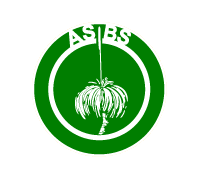
ASBS Newsletter – Book Review
Malesian Seed Plants.
An aid for identification of families and genera.
Vol. 2: Portraits of tree families
Written by M.M.J. van Balgooy.
(From ASBS Newsletter Number 99, June 1999)
Rijksherbarium/Hortus Botanicus, Leiden 1998
ISBN 90-71236-36-6
Price: Dfl. 100,00.
This modest paperback is an interesting addition to the literature on Malesian seed plants. It has been designed very carefully to be nothing more or less than a first step guide to help out when surrounded by a bewildering array of trees, often not flowering or with flowers hopelessly out of reach. It is designed to help make the first few steps towards identification if you have little idea what you are looking at. The identification is only to family level, and for a family to be included in the guide it needed to have at least one tree species in the region with a diameter of 10 cm or more or a height of at least 10 metres. On this basis 111 families are included. Each family gets roughly a page of text, with characters spilt into a variety of increasingly less significant headings, starting with "Always" which means that the characters listed apply to all Malesian species of the family, through "Usually/Often" and "Striking Features". For people like me who get very confused in forests like these, there is also a "Different From" heading, which helps to separate out taxa that might be confused for the family you are reading about.
I have not had the opportunity to use this book, but I have spent time in the mountains of New Guinea, with a guide giving us the local name for each tree, and my job was to write it down for later confirmation with a herbarium specimen and keys. Given that my written interpretation of a language that had little resemblance to English was quaint if you are kind and useless if you aren't, and that our guide decided that telling us the name of each species once was enough, so that if we came across it again later he wouldn't tell because we had already done that one, this turned in to one of the more humiliating exercises in field taxonomy. I would have paid a lot for a book like this then.
There are a couple of obvious faults. Firstly, it is a paperback, with no special protection provided. In many Malesian forests the lifespan of this book if it was genuinely used as a field guide would be very short. This isn't the professed use of the book. I suspect the idea is to get specimens back to the lab and then start the process. The book is illustrated with line drawings taken from a variety of sources, and they vary from excellent to less than that, but in all cases they are a useful addition. It is a pity that very early in the book the illustrations are lost from the facing page to the description, and while this comes and goes, for a guide like this it would have been worth some blank pages to retain that cohesion.
As a palaeobotanist who is often confronted with odd plant bits that I have no idea about, I like books with lots of pictures. Browsing through this book led me to occasionally think about some reproductive structure sitting in a glass vial somewhere that I have been puzzling over for years. Of course we rarely admit that this is how we make identifications, but I think this is a valid approach if the initial picture matching is followed up by a detailed comparison. You have to start somewhere.
So, if you are thinking of working in the Malesian forests and you don't know all the plants present, a copy of this book should be just what you need. The author accepts that there will be errors and he would like to know about them for corrections in future editions. I always like this little touch, it gets you off the hook in so many useful ways. Those of us who are not dedicated plant identifiers but still interested in knowing what we are seeing when we get to places like this should be extremely grateful for pragmatic approaches like this. For the few negative comments there are a lot of positive ones.
Reviewer: Robert S. Hill
Department of Environmental Biology
University of Adelaide